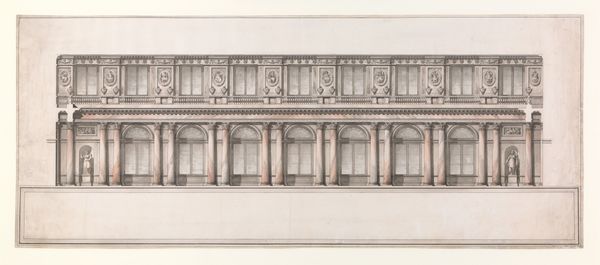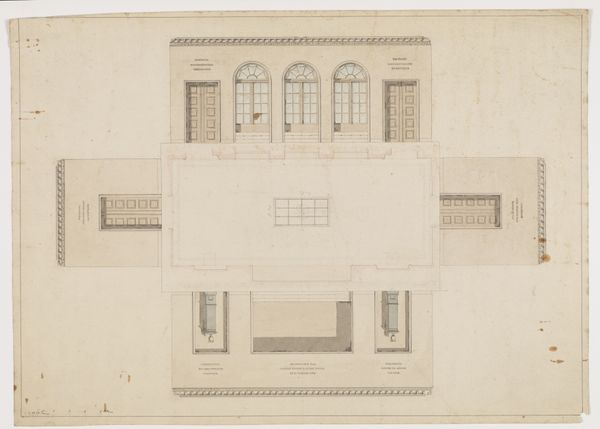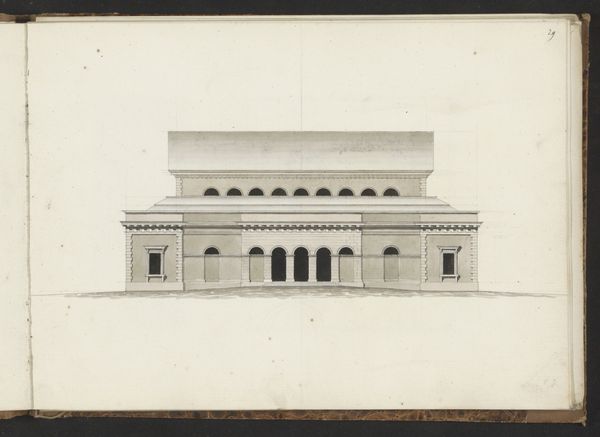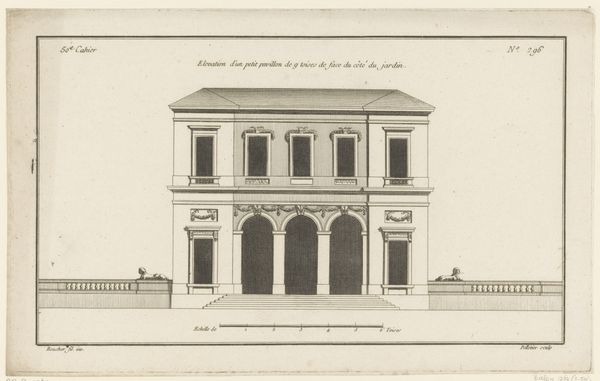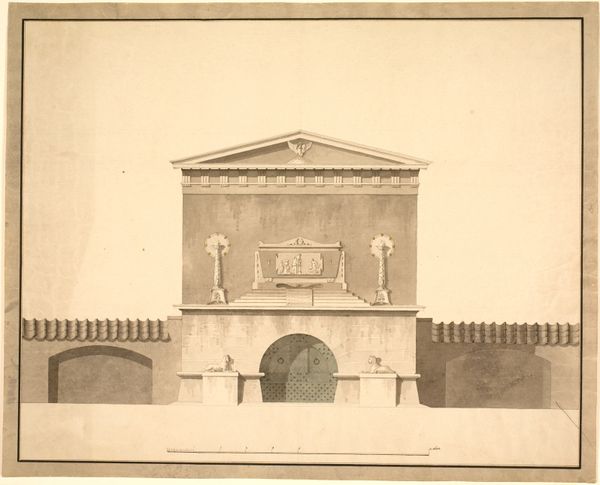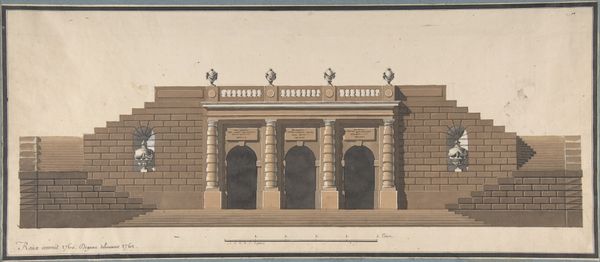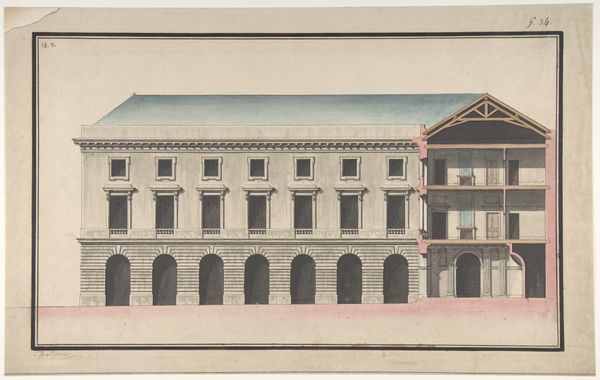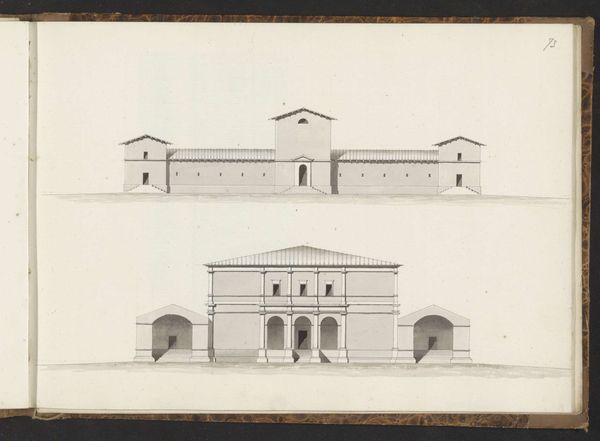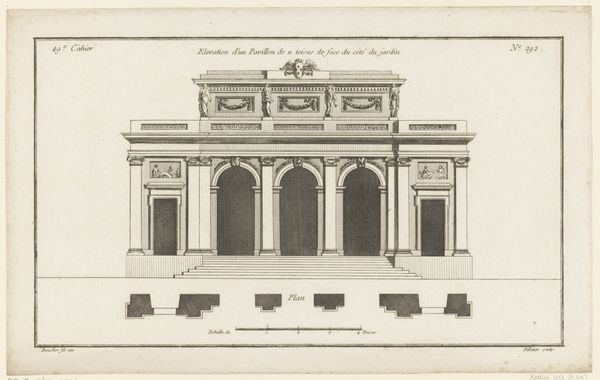
Project for a Public Monument 1750 - 1813
0:00
0:00
drawing, print, architecture
#
drawing
#
neoclacissism
# print
#
landscape
#
historic architecture
#
cityscape
#
watercolor
#
architecture
#
building
Dimensions: sheet: 15 3/16 x 24 3/8 in. (38.5 x 61.9 cm)
Copyright: Public Domain
Editor: We’re looking at Alexandre Théodore Brongniart’s “Project for a Public Monument,” made sometime between 1750 and 1813. It's a drawing, with watercolor, that gives an impression of classical architecture, all in very muted tones. What strikes me is its stillness, an almost unsettling sense of order. What do you see in this piece? Curator: I see the weight of Neoclassical ideals, but also a tension, perhaps unintended, that speaks to the political climate of its time. This monument, so rigidly structured and seemingly permanent, emerges during a period of revolutionary fervor. How do we reconcile the aspiration for timeless, universal values, as embodied in this idealized architectural design, with the very real and destabilizing social upheavals of the late 18th century? Editor: That's fascinating. So, the monument's stoicism is almost a reaction to societal unrest? Curator: Precisely. Think of it as an attempt to impose order and authority. The classical references – the frieze, the symmetry – evoke a golden age, a moment of supposed purity and reason. But, we also need to ask, whose reason? Whose order? Who gets to define these "universal" values, and who is excluded by them? The grand, impersonal scale serves to subdue any individual voice or challenge to authority. Editor: So, this design, while beautiful, carries within it questions of power and exclusion. I hadn’t considered it that way. Curator: Absolutely. By examining the social and political contexts in which artworks like this were created, we can uncover the subtle ways in which aesthetic choices reflect and reinforce prevailing ideologies. We see here the aspiration of imposing a universal visual culture rooted in a desire for social control. Editor: I definitely have a different view of this drawing now. Thanks for illuminating that context for me. Curator: My pleasure! It’s about reading between the lines and seeing beyond the surface.
Comments
No comments
Be the first to comment and join the conversation on the ultimate creative platform.

